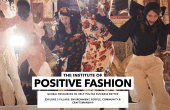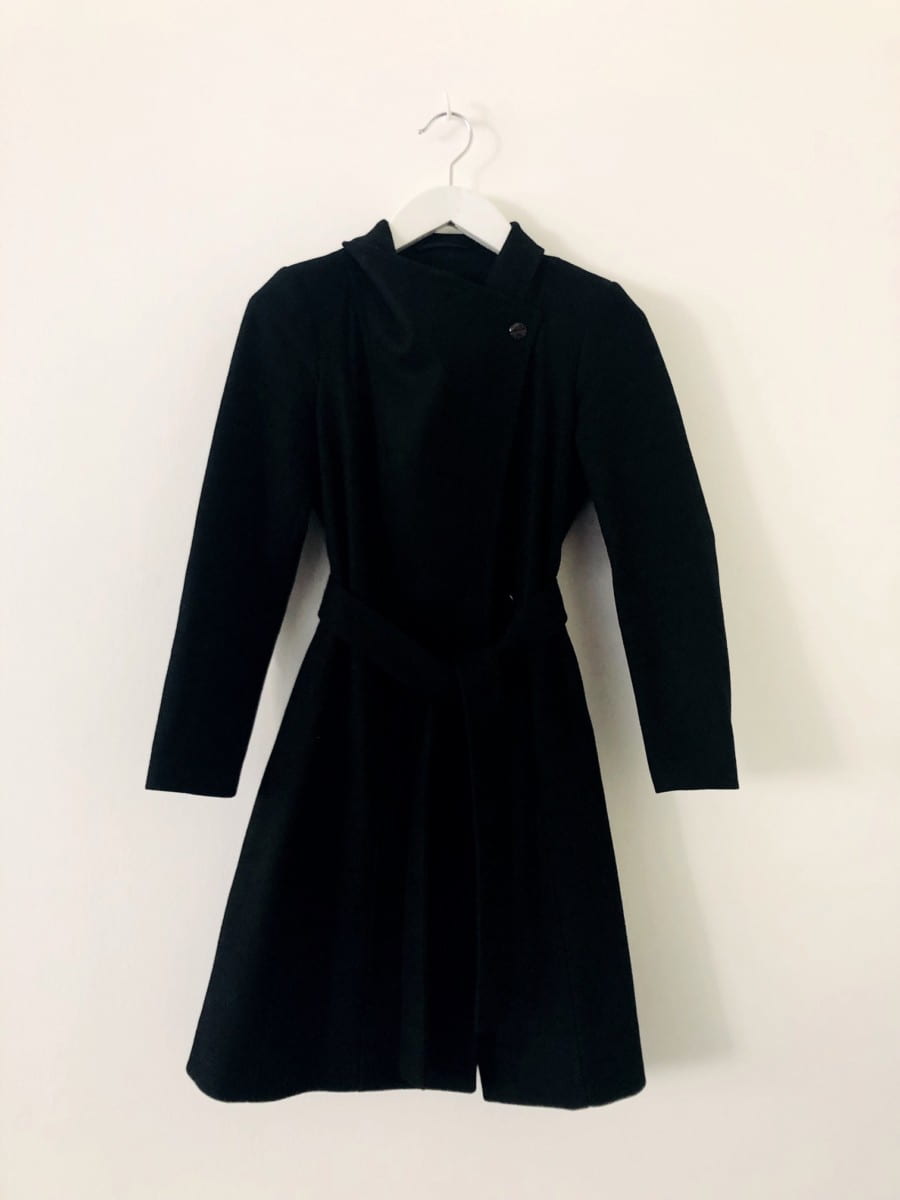When we think of the word vulgar in fashion, it conjures up images of garish outfits, overexposed bodies or people behaving inappropriately; the word is full of negative connotations. However, ‘The Vulgar: Fashion Redefined’ curated by Judith Clark, Professor of Fashion and Museology at LCF, explores a more rounded, more thoughtful definition of vulgarity.
Judith achieves this with the work of fellow curator, psychoanalyst Adam Phillips, who has created 11 different definitions of the word.
The definitions are used to separate the exhibition into 11 categories such as ‘Translating the Vulgar’, ‘Showing Off’ and ‘Common’. Each section opens with the definition of vulgar written by Adam, which Judith responds to with garments spanning a 500 year history and featuring over 40 designers, exploring what the vulgar meant at different time periods and to different people.

Image via The Barbican
This is evident as soon as you enter the exhibition, as the visitor is confronted with two garments made from gold thread. One is a fragment from a 15th century chasuble made for members of the clergy, the other is a 1937 Elsa Schiaparelli dress made entirely from gold braiding.
With their excessive use of gold, both could be considered vulgar, but both could also quite easily be considered very beautiful – just in different contexts. And this really highlights one of the exhibition’s major themes, what is good taste to some people at some point in time, is bad taste in another.
Moreover, the fact that the show opens with two very beautiful garments, which is not necessarily what you’d expect in a show about the vulgar, it immediately engages your imagination and tries to challenge your perception.
This is really further highlighted by the first room “Translating the Vulgar” – one of my favorites – which looks at how the vulgar is often a translation of the original.

This room also caught me by surprise, displaying stunning Grecian-style dresses from Karl Lagerfeld for Chloe and Madame Grès. Again, when I thought of vulgar, this wasn’t exactly what I was expecting. However the dresses illustrate the imitation of classic culture in fashionable dress.
The dresses feature folds, pleats and drapes, but not through volume of fabric, but through embellishment of sequins and embroidery, almost as an optical illusion.
So, the dresses don’t literally have the folds of the fabric and they are not Grecian, but they still reference these things, and in trying to replicating them, the dresses remind us of the “purity of the source”. In this room the vulgar is a copy, it “invites us to imagine the original and exposes what has been lost in translation.”
The idea of the copy as vulgar is also beautifully illustrated by a set of Piet Mondrian inspired dresses. The first is a stunning Yves Saint Laurent dress which used the geometric lines of Mondrian’s paintings and the other two are later copies, one by YSL again and another by a Dutch designer Michael Barnaart Van Bergen.
This display plays with the idea of multiples of the same copy. The first dress is a copy of a piece of art, then the latter two are copies of the first dress, how many times can we reproduce the same design before it becomes vulgar?

At this point, it is worth noting that I haven’t even left the first room of 11 yet, although this does seem to be one the biggest and most significant to the exhibition. There is so much to absorb and ponder.
The other major room on the lower floor is “Showing Off” which looks at excess. Things that are too big, too expensive, and too grandiose, comparing dramatic 18th century court mantuas with a John Galliano for Dior ‘La Mariée’ dress, which, with its full skirt and decadent detailing, seems to take its inspiration from the same century.
Upstairs the theme of the mantua is continued with ‘Oes and Spangles’ inspired by a stunning collection of ‘stomachers’, a type of bodice that accompanied the mantua. This collection poses the question of whether the vulgar has to exist as a whole, or if it can also exist as parts?
Judith shows that on their own the stomachers could have inspired Prada’s famous collars and corsets, but when considered as part of the mantua they may be considered vulgar. Perhaps our reactions to the vulgar are too emotional and rash, maybe if we looked into the vulgar a bit more deeply, unpicking its parts, we too would find inspiration?

Further down the corridor we enter a very dark space, only disturbed by a selection of intricate white lace collars from the 18th and 19th centuries. The room is called ‘Puritan’ reflecting the fact that these collars were considered symbols of purity which adorned plain black clothing.
At first it seems strange to think that these delicate pieces of lacework could be considered vulgar. However why do people need to express their purity? Is this really something that should be put on show? I begin to see the collars as a self-conscious display and realise that in their context, these too could be considered vulgar.
Another highlight was ‘The New Baroque’ which explores how the vulgar is always ‘reactive to ruling standards of taste and manners’. However, if these standards are broken down and it is the role of the fashion designer to test new grounds of standards, the vulgar becomes something of an experiment. This section then, features work of designers experimenting with new styles, the standout of which for me was Iris Van Herpen.
There are three incredible dresses made through 3D printing of acrylic glass, iridescent tulle and a Japanese changeant fabric hand-pleated in different directions and sculpted with wire boning. They are so forward thinking and so unlike anything else I have seen on the catwalk, it was a real privilege to get to see these pieces up close.
One room I found particularly through provoking was ‘Impossible Ambition’, which highlights how the vulgar is always used to describe people who are trying to be something they are not, and at the same time, interestingly hints at how fashion is also aspiring to hold a more ‘serious’ position within the museum. Is fashion vulgar therefore?
On a similar note, I loved the beautiful mannequins Judith used for the show with their calico covering which references museum vocabulary in an interesting way, again questioning fashion’s place in the museum. These are complimented by stunning wigs created by Angelo Seminara in response to the clothes.
The other rooms, include ‘Extreme Bodies’ which focusses on how bodies are vulgarized through clothes, or lack of clothes and features a pair of revealing and concealing Pam Hogg bodysuits; ‘Common’ which focusses on the most common material, denim, and includes Manolo Blahnik’s ‘9 to 5’ boots designed for Rihanna; and ‘The Vulgar Tongue’ which looks at the native and indigenous with beautiful examples from Christian Lacroix’s interest in the traditional dress of the Arles region in France. And so much more!

Understandably there is far too much for me to cover in a single blog post, this is an exhibition that needs to be viewed, savored and reflected upon.
I love the way the exhibition explores a concept in such a cerebral way, breaking down the vulgar into things we may know intuitively, but perhaps haven’t engaged with rationally. I am sure many people will visit this exhibition and enjoy it simply for the stunning garments on display and the beautiful way they are curated. However, the real pleasure in this show lies in the unpicking on a concept so integral to fashion, and humanity, and forcing us to take things we perhaps may ‘know’ subconsciously and challenge them.
In fact, this is probably not even an exhibition you should view once, see it as many times as you can. It is that type of show that just keeps giving. The more you see, the more questions you have to think about and the more you want to discover.
The Vulgar: Fashion Redefined is on at The Barbican Art Gallery until 5 February 2017










